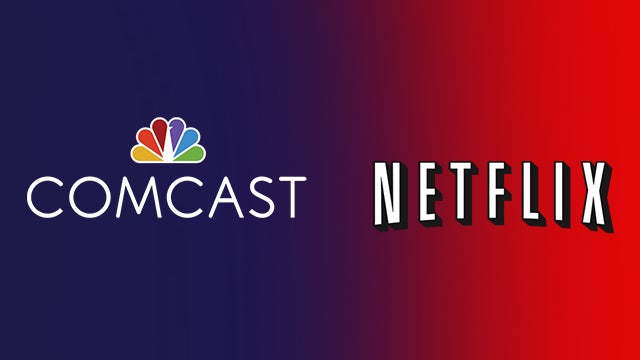Netflix vs Comcast: Netflix bites back in net neutrality row

Netflix has issued a new statement in response to the Comcast net neutrality row.
If you haven’t been following the Netflix and Comcast saga, Comcast limited the bandwidth it allocated to Netflix’s streaming service meaning poorer quality movies and TV shows for users viewing Netflix through a Comcast connection.
Netflix then agreed to pay Comcast a premium rate to allocate more bandwidth to the service, giving customers a better streaming experience.
This goes against Comcast’s pledge to net neutrality rules guaranteeing content providers equal treatment, but Netflix users were definitely getting a bit of a raw deal.
“
The blog post is one of two detailed arguments against paying Comcast, because Netflix is still the one that transmits its content to the Comcast network, which is essentially a brick wall delivery system.
“Comcast does not carry Netflix traffic over long distances. Netflix is itself shouldering the costs and performing the transport function for which it used to pay transit providers. Netflix connects to Comcast in locations all over the U.S., and has offered to connect in as many locations as Comcast desires. So Netflix is moving Netflix content long distances, not Comcast.”
Comcast has previously argued that Netflix has cut out wholesalers deliberately and still has the choice to go back to working with network connection partners if it so wishes.
Netflix believes that it bought “all available transit capacity into Comcast’s networks from multiple transit providers”, but still found its services constantly downgraded because Comcast wouldn’t upgrade the connections as was requested.
Once Netflix forked out the money to Comcast, the service quality increased.
“In sum, Comcast is not charging Netflix for transit service. It is charging Netflix for access to its subscribers. Comcast also charges its subscribers for access to Internet content providers like Netflix. In this way, Comcast is double dipping by getting both its subscribers and Internet content providers to pay for access to each other.”
Read more: Netflix vs Amazon Prime Instant Video

